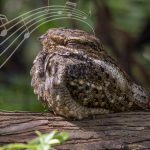The clear benefit of using ground covers instead of grass is less of everything — less water, less fertilizer, less pesticides and less mowing.
Tired of mowing, weeding, feeding and watering the lawn over, and over, and over again? It may be time to forget turf and move on to something that’s drought hardy, water efficient and environmentally friendly: ground covers.
Ground covers are spreading or mounding plants that cover most or all of the soil surface. These can be simply evergreen or provide seasonal flowers. Most are specific to sun or shade, but some are adaptable to both extremes. The clear benefit of using ground covers instead of grass is less of everything — less water, less fertilizer, less pesticides and less mowing.
That said, I do have one pet peeve with a commonly used ground cover: Asiatic jasmine. Landscape crews string-trim this plant weekly. Not cut, mind you, but rip, shred and tear the leaves and vines. Please stop. If you feel the need to trim something weekly, go back to grass. But this is a ground cover. That means trimming only three to four times a year, if that.
Here are some examples of great ground covers, separated by light requirements. Many are WaterSaver Landscape Coupon eligible.
Shade
English ivy – the classic and still great ground cover for the shade. I prefer the small, variegated variety. Fortunately, not invasive here as in the Pacific Northwest.
Dwarf Mexican petunia, aka ‘Katy’ petunia – the small perennial with the violet or pink flowers is a common ground cover in south central Texas. I find it does best in small, confined beds. The parent, Mexican petunia, is invasive. Mow it once a year with a lawn mower.
Mondo or monkey grass – this comes in ‘standard’ and ‘dwarf’ versions, but don’t let the names fool you. This evergreen “grass” grows to be four to six inches tall. No mowing, no fertilizer, no pesticide.
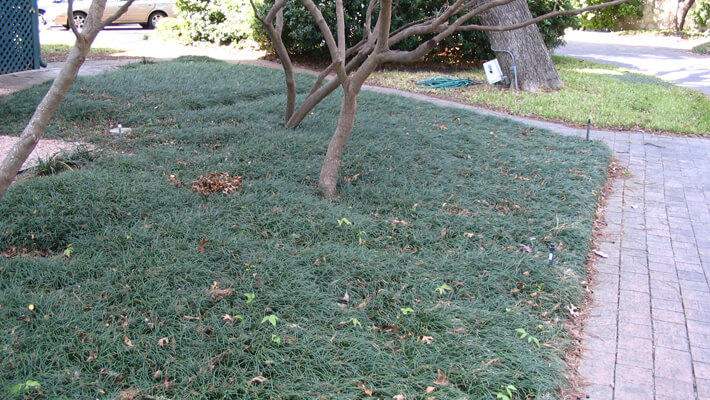
Ajuga – this low growing perennial with blue or purple flowers is perfect for pervious patios and borders along paths. In my opinion, it’s not deer-resistant so use only in fenced areas or in the city.
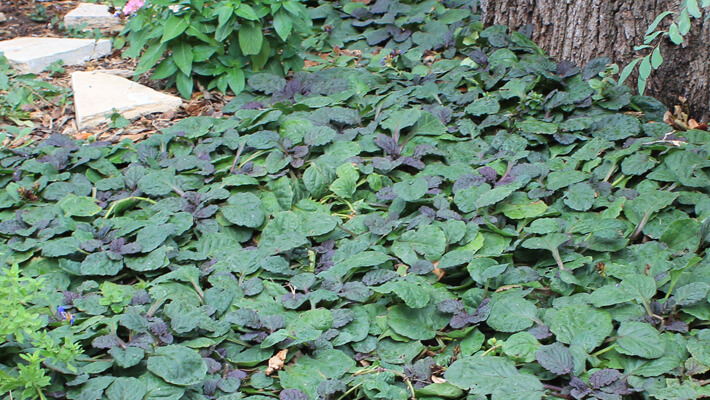
Purple oxalis – my all-time favorite shade perennial that can be used as a ground cover. Features purple foliage and pink flowers, and the only maintenance required is pruning once every five years.
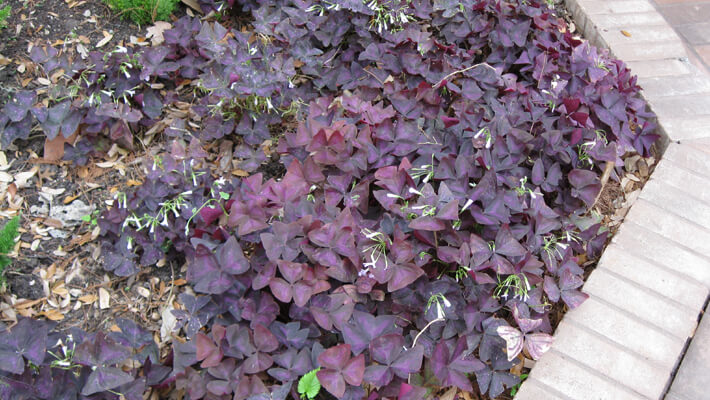
Inland sea oats – a native grass for large swaths of backyard understory. Not a turf grass, but more of a bunch grass perennial, since it goes dormant in the winter. Survives on rainwater and three or four monthly supplements. Coupon eligible.
Sun
Silver ponyfoot – this South America native loves sun and heat. Excellent for the front yard near the curb and sidewalk or between driveways. Coupon eligible.
Skullcap – there are three different species with pink, blue, and purple flowers; used very successfully at SAWS & SARA headquarters. Mow twice a year at most. Coupon eligible.
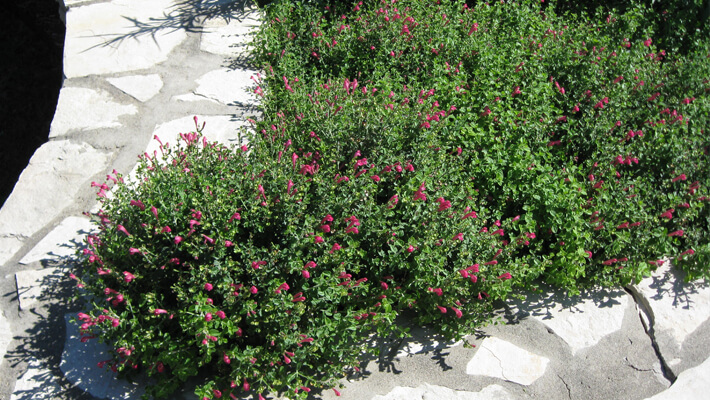
Santolina – an extremely drought-tolerant plant that comes in green and gray varieties, both with yellow flowers.
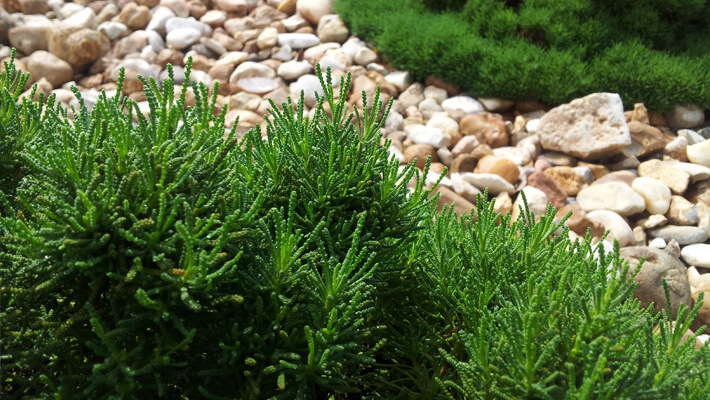
Prostrate rosemary – a virtually indestructible perennial that can also be used in the kitchen. The only way to kill it is by watering it, so just don’t. Coupon eligible.
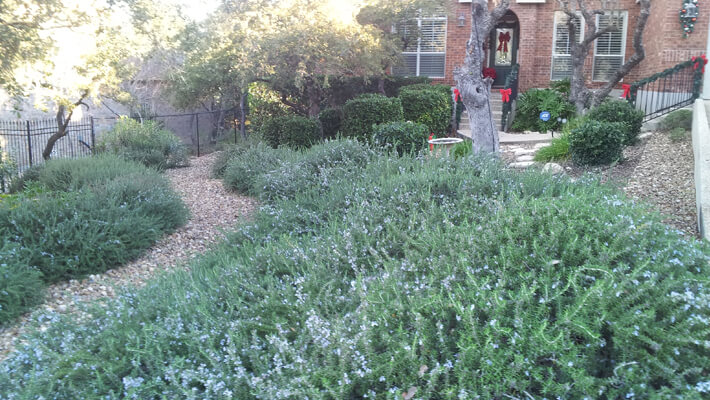
Bush germander – a very low growing perennial with purple flowers; excellent for those hot and dry row areas along the street. There are bush and creeping selections.
Damianita – my favorite native perennial is attractive to butterflies and hummingbirds, but not deer. No water, fertilizer, or pruning required. Just plant, establish and walk away. Coupon eligible.
Sun or Shade
Leadwort – also known as dwarf plumbago, this native to western China is a fantastic cobalt blue-flowered plant that tolerates both sun and shade. Coupon eligible.
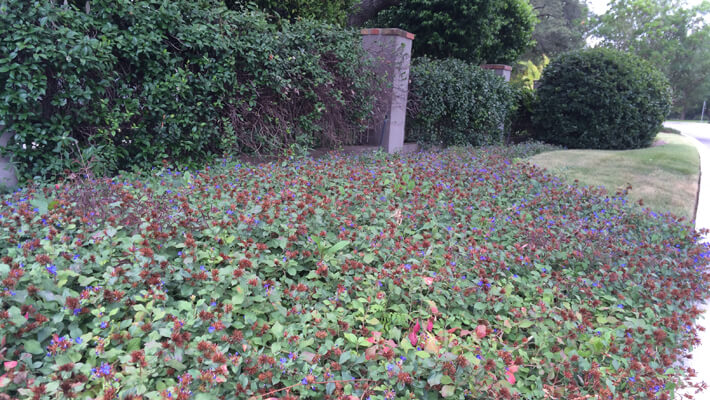
Frog Fruit – a new ground cover that is gaining in popularity. Frog fruit may grow in sun or shade and can spread rapidly. Does not exceed 12 inches in height. Coupon eligible.
Purple heart – a classic and still one of the best, this one is also virtually indestructible. Coupon eligible.
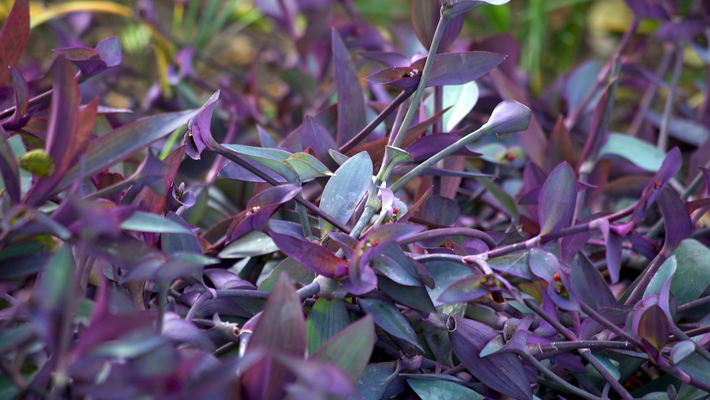
Texas sedge – SAWS Conservation personnel are excited about this native in the landscape. This is “out-of-the-box” thinking and we have seen a few and hope for more examples in San Antonio.
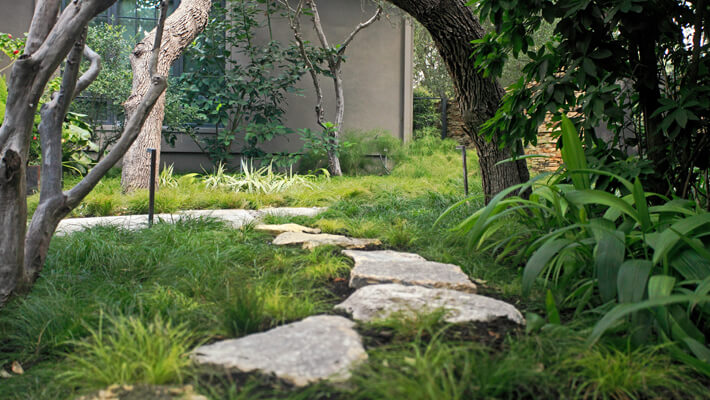
These are just few examples of ground covers. Check our plant database for more ideas! Opportunities abound for replacing that tiresome, water-sucking grass. Consider expanding your landscape plant palette by removing the grass monoculture.




